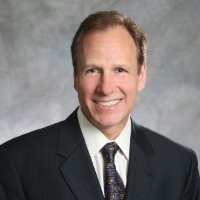- Video Library
- Lloyd Mencinger, Aqua Medical - Vapor-Based Endoscopic Ablation | LSI USA '24
Lloyd Mencinger, Aqua Medical - Vapor-Based Endoscopic Ablation | LSI USA '24

Lloyd Mencinger
High energy CEO, Sales, Marketing, & Business Development leader with over twelve years as an International expatriate.
Strong track record of delivering results in both blue chip and early-stage companies. Expert at developing new markets, driving growth, executing turnarounds, and creating winning cultures.
History of driving rapid market penetration for new medical device technology, through: 1) field sales effectiveness, 2) strong customer development, 3) clinical economic arguments, 4) targeted physician & referral pathway marketing
Specialties:
- Sales, Marketing, Strategy, New Business Development
- International Growth Execution, Europe, Asia, Americas
- Sales & Field Force Effectiveness
- Physician Adoption, New Market Development
- Marketing to Physicians & Direct-to-Patients
- General Management
- Early-Stage Company Growth, Turnarounds
- Global Product Commercialization
- R&D Product Development & Manufacturing
- Organization Design to Drive P&L Growth
Lloyd Mencinger
High energy CEO, Sales, Marketing, & Business Development leader with over twelve years as an International expatriate.
Strong track record of delivering results in both blue chip and early-stage companies. Expert at developing new markets, driving growth, executing turnarounds, and creating winning cultures.
History of driving rapid market penetration for new medical device technology, through: 1) field sales effectiveness, 2) strong customer development, 3) clinical economic arguments, 4) targeted physician & referral pathway marketing
Specialties:
- Sales, Marketing, Strategy, New Business Development
- International Growth Execution, Europe, Asia, Americas
- Sales & Field Force Effectiveness
- Physician Adoption, New Market Development
- Marketing to Physicians & Direct-to-Patients
- General Management
- Early-Stage Company Growth, Turnarounds
- Global Product Commercialization
- R&D Product Development & Manufacturing
- Organization Design to Drive P&L Growth

17011 Beach Blvd, Suite 500 Huntington Beach, CA 92647
714-847-3540© 2025 Life Science Intelligence, Inc., All Rights Reserved. | Privacy Policy







